China’s incredible shrinking factories: forced to downsize just to survive
Rising labour costs, higher real estate prices, less favourable government policies and smaller order volumes are forcing Chinese plants to downsize - just to survive.
PUBLISHED : Friday, 17 April, 2015, 1:06pm
UPDATED : Saturday, 18 April, 2015, 12:46pm
Reuters in Beijing
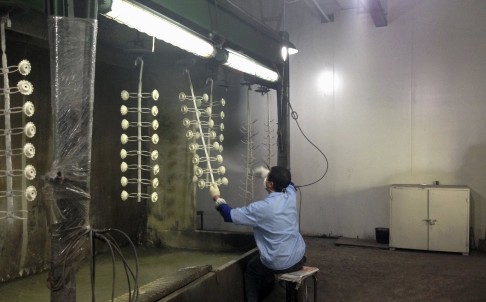
A man works at Pascal Lighting, which employed about 2,000 staff eight years ago, but today has only about 200 employees. Photo: Reuters
Eight years ago, Pascal Lighting employed about 2,000 workers on a leafy campus in southern China. Today it has only 200.
The Taiwanese light manufacturer has cut its workforce and leased most of its space to other companies: lamp workshops, a mobile phone maker, a logistics group, a liquor brand.
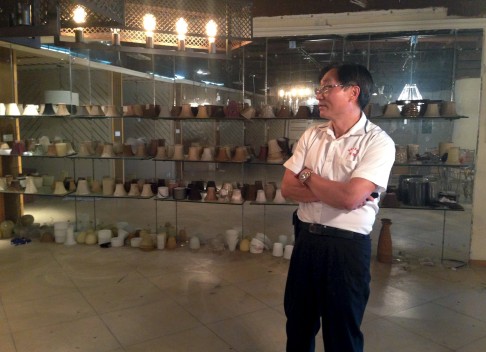
Johnny Tsai, general manager of Pascal, which has downsized and leased much of its Guangdong factory space to other companies. Photo: Reuters
“It used to be that as long as you had more orders, you could get everything you needed to expand your factory, and you could expand,” said Johnny Tsai, general manager of Pascal, in Huizhou , in central Guangdong province.
That is no longer the case.
The Chinese factory – an institution that was once so large that it was measured in sports fields – is shrinking.
Rising labour costs, higher real estate prices, less favourable government policies and smaller order volumes are forcing Chinese plants to downsize just to survive.
Their contraction suggests a new model of light manufacturing emerging from China’s economic slowdown: smaller plants are replacing the vertically integrated behemoths that defined Chinese manufacturing in the early 2000s.
Cankun, a factory making kitchen and electrical in Foshan , southern China had more than 22,000 manufacturing employees in 2005, according to its annual report. Today, that number has shrunk to only 3,000, according to a senior executive.
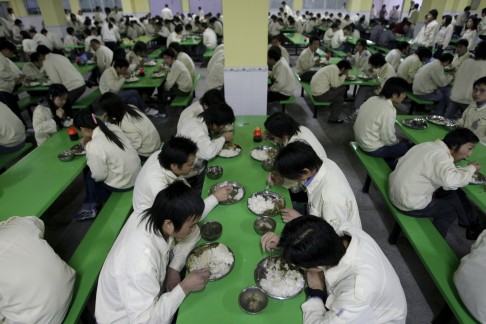
The way things were: hundreds of workers eat dinner at an electronics factory in January 2008 in Dongguan, in Guangdong province. Photo: Reuters
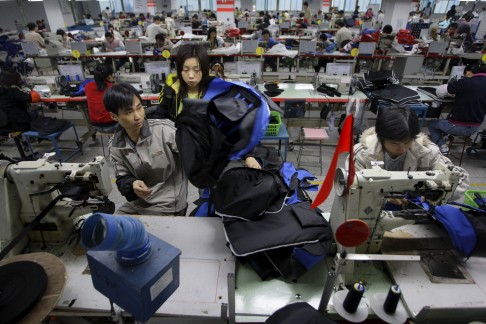
Staff work at a bag factory in Guangdong province in 2008. Photo: Reuters
Some Hong Kong-owned factories in southern China have cut their staff numbers by between 50 per cent and 60 per cent, said Stanley Lau, chairman of the business lobby Federation of Hong Kong Industries.
Certainly, the giant Chinese factory is hardly extinct.
Taiwan’s Foxconn Technology Group still employs about 1.3 million people during peak production times – many of them piecing together Apple iPhones. Those factories that can afford to do so, including Foxconn, are increasing automation.
However, for industries where the product design changes frequently, such as lighting, the use of robots adds little value.
The contraction of Chinese factories illustrates how much the advantages they once enjoyed have eroded.
In the 1990s and early 2000s, cities in Chinese coastal regions competed to offer investors discounted land. Today, the same land is scarce, and dear.
New labour and environmental laws have been introduced, too, making life tougher for employers.
The workforce has changed, too.
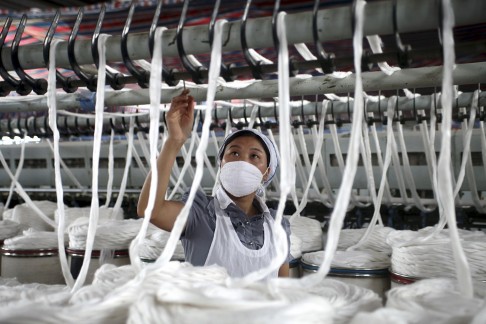
A woman works in an automated garment factory in Guangxi Guangxi Zhuang Autonomous Region. Photo: Reuters
China’s working age population began to contract in 2012. The number of strikes more than doubled last year compared with 2013.
Jobs have shifted into the services sector, too, while labor costs have more than quadrupled in US dollar terms since 2005, according to analysis from the Economist Intelligence Unit.
Higher wage costs are in turn making it more expensive to close down, move, or restructure.
Chinese law requires companies terminating employees to pay compensation worth one month’s salary for every year of employment. In addition, workers at struggling plants often demand back payment of unpaid social welfare and pension benefits. Having fewer employees makes it cheaper to shutter a plant.
Nor are orders what they used to be.
On Monday, China announced that export volumes fell 15 per cent in March compared with the same period the year before.
China’s manufacturing purchasing managers index (PMI), which measures activity in the industrial sector, has been hovering around 50, the inflection point between expansion and contraction, for nearly two years.
Pascal, which Tsai said was still profitable, began to shed workers through natural attrition during the global financial crisis.
Today, it sells lights that it designs – a practice that allows it to command higher prices. The rent from its tenants, including a Chinese company that designs and assembles mobile phones for export to India, also helps.
To lower its costs, Pascal also subcontracts lighting orders to other plants when its customers allow.
For global retailers and brands that rely heavily on Chinese plants,such as H&M, Adidas, Nike, Gap, Wal-Mart, Sears and Target, the increase in outsourcing among smaller plants is both good and bad news.
Smaller plants with lower overheads are more competitive. But subcontracting can lead to more quality problems and eliminate transparency for customers as orders disappear into a network of suppliers invisible to international buyers.
Shrinking may also be the last stop on the road to closure.
“When factories are small, they can fail,” said Ben Schwall, an American businessman who has been buying from Chinese factories for two decades. “It’s a lot easier to close up when you’re a design and marketing centre.”
Consultants to Chinese factories say many could find other ways to cut costs and improve efficiency beyond simply reducing their workforce.
“Chinese factories have never put much emphasis on management,” said Qiu Junzhe, chief consultant at C&K Consultancy, a Shenzhen-based manufacturing advisory firm.
“They must innovate or improve the way they are managed, or they will not survive.”
